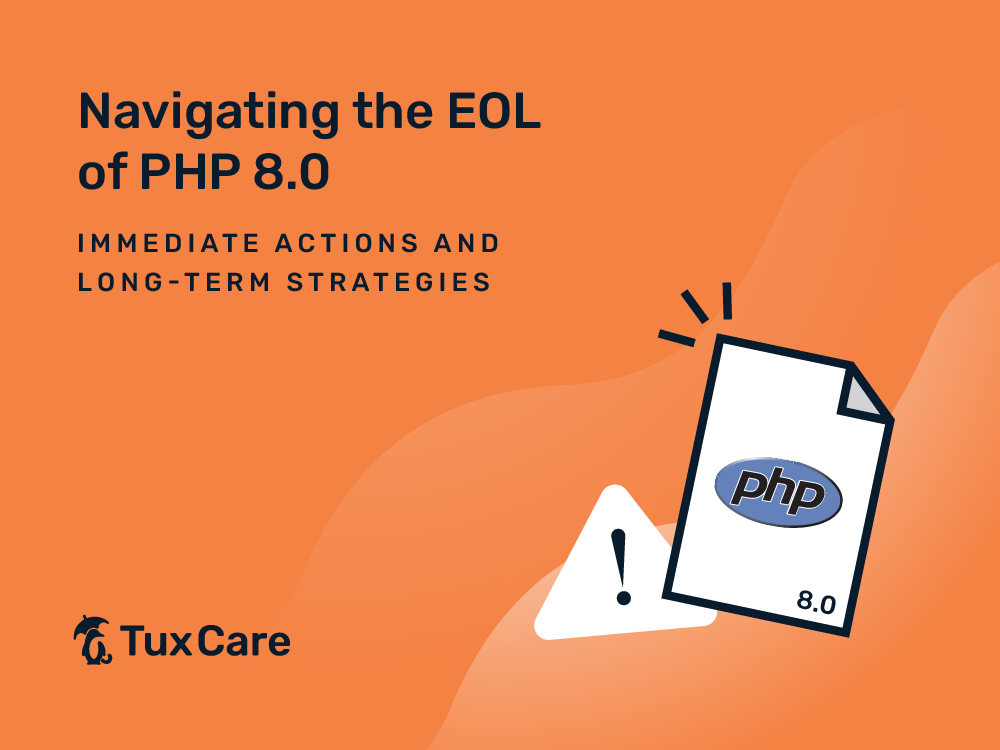Navigating the EOL of PHP 8.0: Immediate Actions and Long-Term Strategies
- Since PHP 8.0 reached its end of life in November 2023, organizations have been facing significant security and operational risks due to the lack of official security updates.
- To mitigate these risks, organizations can choose from several options: self-support, upgrading to a newer version such as PHP 8.3, or seeking extended lifecycle support services for security and compliance.
- The recommended action plan includes assessing the current use of PHP 8.0, planning for an upgrade, implementing additional security measures, and utilizing tools like PHP Compatibility Checker and automated testing frameworks to ensure a smooth transition.
The progression of programming languages through their lifecycles demands vigilant management, particularly at the transition to End-of-Life (EOL). With PHP 8.0’s EOL in November 2023, organizations that have not yet migrated face immediate security and operational risks. This guide provides essential tools and an action plan for organizations to navigate this post-EOL landscape effectively.
Understanding the PHP 8.0 Support Lifecycle
PHP 8.0, initially released on November 26, 2020, has now concluded its journey with its active support ceasing in November 2022 and critical security support ending in November 2023. As of today, without official security updates, PHP 8.0 EOL installations are exposed to potential vulnerabilities and compatibility challenges.
What Using EOL PHP Means for You
Operating with an unsupported PHP version can lead to security vulnerabilities and compatibility issues. Furthermore, non-compliance with various regulatory standards can pose significant risks to organizational operations and data integrity.
Organizations must consider their approach for the post-EOL period:
- Self-Support: Some may choose to self-support, managing security patches and updates internally. This requires considerable expertise and resources and is generally not recommended due to the high risks involved.
- Upgrading to a Newer Version: Transitioning from PHP 8.0 EOL to a newer version, like PHP 8.3, is an option. Changes in minor versions tend to be incremental without significant overhauls to the language’s syntax or core functionality. However, such transitions still need to be carefully planned. Transitioning to a major version, once available, involves more preparation and testing. Major releases can deprecate functions and features, introduce new syntax, and change behaviors that affect how existing applications run.
- Extending the PHP Lifecycle: Services like TuxCare’s Extended Lifecycle Support offer extended support for PHP 8.0 and other EOL PHP versions, providing critical security patches and compliance assurance.
Immediate Steps for PHP 8.0 EOL Users
Organizations still using PHP 8.0 must take swift action:
- Assess the Situation: Evaluate your current use of PHP 8.0. Identify all systems, applications, and dependencies tied to this version.
- Plan for Upgrade: Determine the target version for an upgrade – ideally the latest stable release (PHP 8.3).
- Implement Compensating Security Measures: As an immediate stopgap, employ additional security measures. This could include firewalls, intrusion detection systems, and rigorous monitoring for unusual activity.
- Explore Extended Support Options: If upgrading immediately is not feasible, seek extended support from third-party vendors.
Tools to Assist in the Transition
Utilize the following tools to support your upgrade process:
- PHP Compatibility Checker: Use this to determine how your current codebase will fare under a newer PHP version.
- Static Analysis Tools: Employ tools like PHPStan or Psalm to detect potential code issues before they cause problems in production.
- Automated Testing Frameworks: Systems like PHPUnit will help confirm that your code behaves as expected in the new environment.
- Upgrade Manuals: PHP.net provides detailed migration guides that outline the changes between versions, helping developers adjust their code accordingly.
- Develop an Upgrade Strategy: Organize a systematic approach to upgrading, beginning with a development environment, proceeding to testing, and only then moving to production. This phased approach helps mitigate risk.
Building a Sustainable Future Post-PHP 8.0
To build a sustainable future post-PHP 8.0, it is crucial to focus on several key strategies. Firstly, educating your team is essential; conducting training sessions and workshops will help your developers stay current with the latest PHP features and best practices. Additionally, this transition period provides an excellent opportunity for code refactoring. Take the time to optimize your codebase by removing deprecated functions and adopting newer, more efficient coding patterns. Lastly, establishing regular review cycles will keep your team informed about PHP lifecycle changes, enabling you to proactively manage and mitigate future risks associated with End-of-Life (EOL) scenarios.
Closing Remarks
The PHP 8.0 EOL demands immediate attention to secure and update systems. By leveraging the right tools, seeking expert assistance, and following a well-crafted action plan, organizations can navigate this transition smoothly and maintain robust, secure web operations. Proactivity now will safeguard against potential threats and align your technological stack with current standards.



 Documentation
Documentation Login
Login




